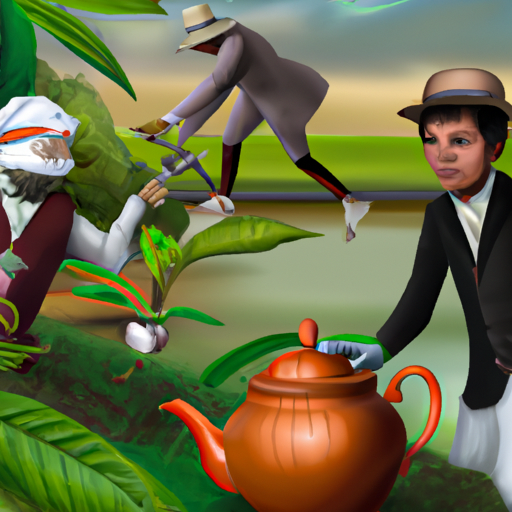The Great Tea Heist: Stealing Tea Cultivars Throughout History
Did you know that many of our favorite tea cultivars owe their existence to some mischievous act of thievery? The history of tea isn't just a peaceful, zen affair. It's spiked with daring heists, high stakes smuggling, and stealthy operations to snag the secrets of tea production. Fasten your cup and saucer because we're about to embark on a roller coaster tea-venture full of whiffs and mystery.
The Tea Trade and The Great Tea Robbery
Let's travel back to the 18th century, when England's thirst for tea had reached new heights. The East India Company dominated the tea trade, and China had a virtual monopoly on the tea market. The British clamored for tea, and the Chinese demanded silver in return. However, due to the trade embargoes and staving off bankruptcy, the British Empire couldn't keep the silver flowing.
In response, the British started secretly exporting opium to China, leading to the Opium Wars and eventually starting the great tea heist that would change the global tea industry. To get their hands on the valuable tea plants and production techniques, the British sent Robert Fortune, a brave botanist, to China. Here's how events unfolded:
| Year | Event |
|---|---|
| 1843 | Robert Fortune travels to China for the first time. |
| 1848 | The East India Company hires Fortune to obtain tea plants and learn the secrets of tea production. |
| 1851 | Fortune, disguised as a Chinese merchant, manages to bring 20,000 tea plants and Chinese workers to India. |
Table 1: A timeline of Robert Fortune's Tea Heist
The above events marked the beginning of tea production in India and the end of China's monopoly on tea-trade. Today, India is the second-largest producer of tea in the world, thanks to the seeds of intrigue planted by Fortune.
Beyond China: Stealing Tea Cultivars Around the World
Robert Fortune's tea heist isn't a unique case! Let's take a look at the table below that summarizes the fascinating thievery-driven spread of tea cultivars around the tea-fueled globe.
| Target Country | Stolen Cultivar | Culprit Nation | Date | Outcome |
|---|---|---|---|---|
| China | Tie Guan Yin | Taiwan | 19th century | Tie Guan Yin becomes one of the most popular teas in Taiwan, leading to the development of several unique and delicious Taiwanese sub-varieties. |
| Korea | Sejak | Japan | 16th century | The stolen Korean tea variety was an essential source of green tea seeds for Japanese tea gardens for more than a century. |
| Russia | Georgian Tea | USSR | 19th century | Georgian tea cultivars were secretly smuggled into the USSR for the development of the Soviet tea industry. |
| India | Darjeeling Tea | Nepal | 20th century | Nepali tea farmers bring Darjeeling Tea cultivars into Nepal and create their unique Himalayan tea industry, offering flavors reminiscent of the original Darjeeling. |
Table 2: A summary of tea cultivar thefts across the globe
As you can see, tea cultivar theft is a time-honored tradition that has shaped the modern tea landscape in different regions around the world. Although we don't condone theft, sometimes we can't help but raise a sly eyebrow and sip our tea, enjoying the cheeky consequences of these historic events.
The Unspoken Tea Thief Code: Stolen Cultivars Benefit All
One could argue that the thefts of tea cultivars have spurred innovation and numerous tea varieties we enjoy today. Imagine a world where Darjeeling tea remained exclusively in India, or Tie Guan Yin never left China. By diversifying these tea cultivars, tea enthusiasts now revel in the wonder of tea flavors from around the world. Are tea cultivar heists a necessary evil? It all depends on how you steep your perspective.
As you sip your next cup of tea, take a moment to ponder its history. There's a chance we owe its existence to some daring and covert operation. In the world of tea, the duality of sweet serenity and hushed criminality go hand-in-hand.
Our thirst for more tea tales keeps us steeping, and we'd love to know what you think of these historic heists. Share your thoughts in the discussion below. Here's to a little mischief in each and every cup—it's our shared legacy, as tea drinkers throughout the ages. Cheers!
